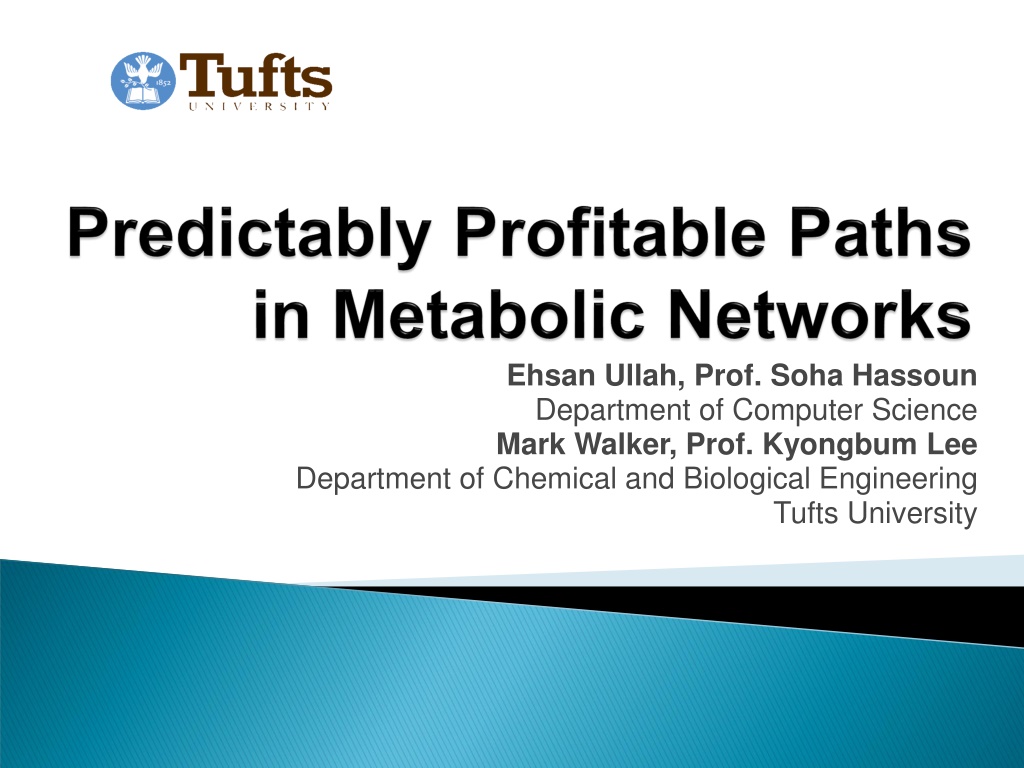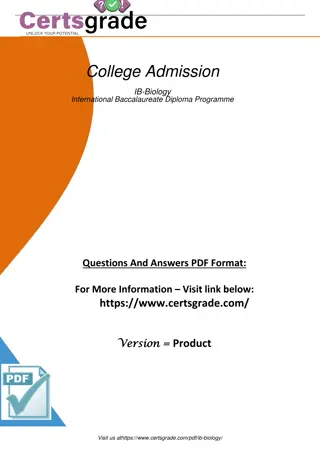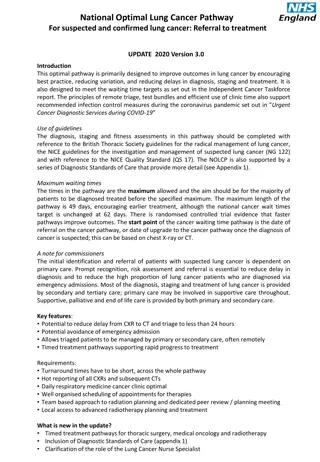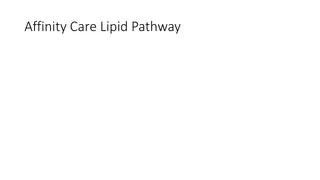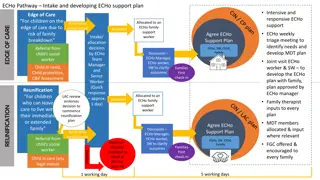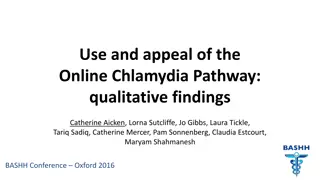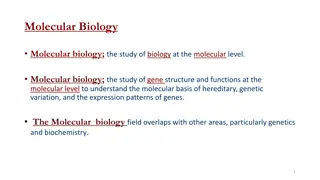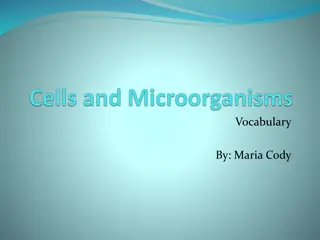Pathway Analysis in Systems Biology
This article delves into the realm of pathway analysis in systems biology, focusing on methods such as embedding new pathways, enumeration of elementary flux modes, flux variations in metabolic networks, and identification of profitable networks. It explores strategies for optimizing metabolic pathways and predicting optimal flux distributions.
Download Presentation

Please find below an Image/Link to download the presentation.
The content on the website is provided AS IS for your information and personal use only. It may not be sold, licensed, or shared on other websites without obtaining consent from the author.If you encounter any issues during the download, it is possible that the publisher has removed the file from their server.
You are allowed to download the files provided on this website for personal or commercial use, subject to the condition that they are used lawfully. All files are the property of their respective owners.
The content on the website is provided AS IS for your information and personal use only. It may not be sold, licensed, or shared on other websites without obtaining consent from the author.
E N D
Presentation Transcript
Ehsan Ullah, Prof. Soha Hassoun Department of Computer Science Mark Walker, Prof. Kyongbum Lee Department of Chemical and Biological Engineering Tufts University
Embedding new pathways Removing pathways Improving existing pathways (Atsumi et al., 2008) (Trinh et al., 2006) (Steen et al., 2010) 2
Enumeration Elementary Flux Mode (Schuster et al., 2000) Graph traversal Dominant-Edge Pathway Algorithm (Ullah et al., 2009) Favorite Path Algorithm* s 4th R1 2nd b R3 R2 d c R4 R5 3rd e Dominant- Edge 1st R6 t *Unpublished 3
Flux variations arise from different conditions Given a metabolic network graph G = (V,E), source vertex s and destination vertex t and a flux range associated with each edge, find the predictably profitable path in the graph 4
A network in which any path from s to t can carry at minimum vp amount of flux Gp = G(V,E) such that we vp vp is obtained from the best flux-limiting step s R1 (10) b R3 (4) R3 (4) R2 (6) d d c R4 (6) R5 (4) R5 (4) e R6 (10) t 5
A path in the network having reactions with smallest variations in flux s R1 [10 15] b R3 [7 12] R3 [7 12] R2 [8 14] d d c R4 [6 10] R5 [3 11] R5 [3 11] e R6 [9 18] t 6
Identification of profitable network Assign the lower limit of each flux range as edge weight Find flux limiting step using favorite path algorithm Prune all edges having weight less than the flux liming step found in (b) 1. a) b) c) Identification of predictable path in profitable network Assign the flux ranges as edge weight Use favorite path algorithm to find predictably profitable path 2. a) b) 7
Escherichia coli 62 Reactions 51 Compounds Liver Cell 121 Reactions 126 Compounds 8
Production of ethanol from glucose in anaerobic state Flux data generated from Carlson, R., Scrienc, F. 2004 9
glucose PEP ethanol Pyruvate 10
glucose Flux-limiting step Flux Limiting Step PEP ethanol Pyruvate 11
glucose Flux-limiting step Profitable network Profitable Network PEP ethanol Pyruvate 12
glucose Flux-limiting step Profitable network Predictably profitable path Glycolysis is more predictable than PPP Matches maximal production path identified by (Trinh et al., 2006) Glycolysis PEP ethanol Pyruvate 13
Production of glutathione from glucose Flux data taken from HepG2 cultures* Two observed states Drug free state Drug fed state (0.1mM of Troglitazone) *Unpublished results 14
glucose glutathione glu cys gly ala akg lys glu akg 15
glucose glutathione glu cys Drug free state gly ala akg lys glu akg 16
glucose glutathione glu cys Drug free state PPP, Alanine biosynthesis, Lysine degradation gly ala akg lys glu akg 17
glucose glutathione glu cys Drug fed state gly ala akg lys glu akg 18
glucose glutathione glu cys Drug fed state PPP, Cystine biosynthesis gly ala akg lys glu akg 19
Efficient way of identifying target pathways for analyzing and engineering metabolic networks Capable of handling variations in flux data Polynomial runtime 20
